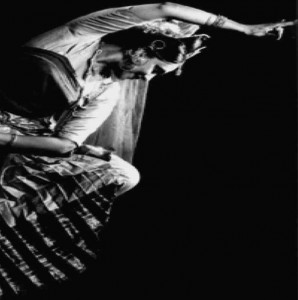Since she was not sure how the men would accept dancing she offered to train them in Kalaripayattu, an ancient martial arts form of South India. Even then there was deep skepticism. “My first reaction seeing her was that I thought that maybe this woman is, you know, she’s gone off her head,” Akkara, one of the inmates, said. “Because, otherwise, why’s she coming to the prison to teach 50 prisoners who are either rapists or murderers?”
Akkara and other inmates watched from the sideline as Alokananda persisted, starting with a small group of inmates at first. Slowly the group grew and it evolved from martial art forms to performing a dance drama. They focused on the story of the sage Valmiki who was a bandit and murderer turned saint. This story resonated with the convicts and art turned into healing therapy.
Akkara was a hardened criminal and had been running gangs right from school and was caught by the police and convicted while still in college. Akkara found his heart melting as his atheism turned into a deeper spirituality. He describes his moment of conversion as he walked on to stage one day while performing, “So I looked around and, you know, I felt that, do I deserve this? And I started crying. From that day, there was no looking back.”
Even for Alokananda the journey was not easy. “When I saw them, I just felt that any one of them could have been my son,” she says. “All I did was I accepted them. The love came later.”
The prisoners responded to her love. In the beginning she was referred to as Madam, but in 8 months she just became mother to everybody. The prisoners began referring to her as Ma.
Just because some of the inmates have had a change of heart does not mean that the larger society was ready to accept them when they were released. Akkara found this when he came out of prison. Finding it impossible to land a job he started his own company. His company does anything from landscaping services, to pesticide treatment, to even providing security services. Akkara hires ex-convicts as his employees. He has been helped along by Alokananda and the IG of prisons gave surety for the loans that Akkara needed for his business. They have since started a non-profit, Touch World, to help rehabilitation of ex-convicts.
Meanwhile Alokananda continues her dance program within the prison and the prison dance troupe goes around the country giving performances. Alokananda Roy says she always reminds cheering audiences that the concert is not the feel-good end of this story. “I always speak and I say, ‘Let this acceptance not end this evening,’ ” she says. “People ask me, ‘Are they really reformed?’ I say, ‘Are we?’ ”
Related and Credits:
From a Calcutta prison to the classical stage: The story on NPR.
Dance Therapy to quit crime addiction.
Touch World
When criminals dance to the tune of social worker
You may also like: Only Those Who Listen Can Hear!


I am a dancer and I also am a thriving yogi. Thank you so very much for this amazing story of strength and renewal. It was a great inspiration!